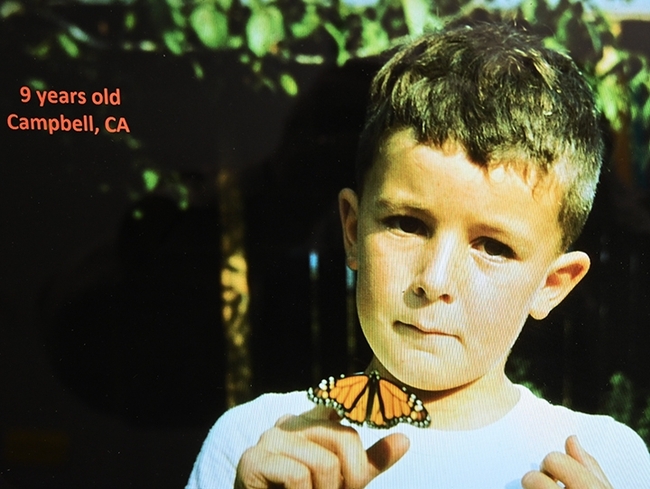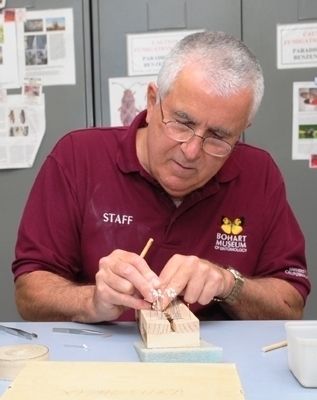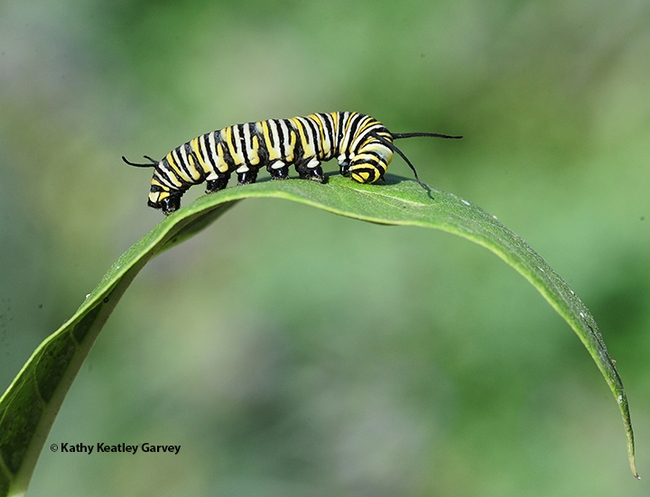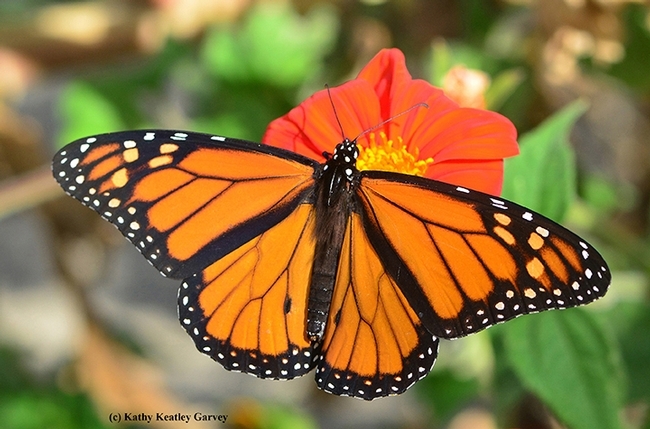
Scientists estimate that only 10 percent of the eggs and 'cats survive to adulthood.
They don't "survive" at all in California classrooms.
California classrooms used to showcase the metamorphosis of the monarch--from egg to caterpillar to chrysalis to adult-- but no more. If you live in California, you're not allowed to collect or rear monarchs without a scientific permit. And scientific permits are difficult to obtain.
According to the California Department of Fish and Wildlife: "A Scientific Collecting Permit (SCP) is required to handle wild monarchs in California including for educational purposes. It is unlawful to collect, remove from the wild and/or captively rear monarchs in California without an SCP, per California Code of Regulations (CCR), Title 14, section 650.
Admire them in the wild, but legally, you can't collect or rear them.
As a child growing up in the San Jose area, entomologist Jeff Smith, curator of the Lepidoptera collection at the Bohart Museum of Entomology, UC Davis, "raised and released many, many dozens of monarchs, as most empty lots were filled with vast stands of narrow-leaf milkweed, and we could easily gather caterpillars and keep them fed and healthy until they matured. This was an extraordinary thing to be able to watch--the final instar of the larva molting to change to the beautiful chrysalis and then seeing the butterfly develop within the chrysalis and hatch. We would hold it on our finger as the wings expanded and, finally, the butterfly flew away."
The Bohart Museum has some seven drawers of monarch specimens. "With around 60 specimens per drawer that could amount to nearly 400 plus specimens (some drawers are not full," he said. The collection also includes nearly-white monarch specimens from Hawaii.
In their book, The Lives of Butterflies: A Natural History of Our Planet's Butterfly Life (Princeton University Press, 2024), authors David James and David Lohman point out that "...our children are the future and it is they who will determine the future of butterflies. If a child finds a caterpillar, let them keep it, feed it, and watch it metamorphose.They will remember the experience for the rest of their life, and it will instill in them a love and appreciation for lives smaller than their own."
James is an entomologist and associate professor at Washington State University who researches migratory monarchs, and Lohman is a biologist, professor and department chair, City College of New York.
“It is important that we do not try to excessively regulate to conserve butterfly populations," they wrote. "We need people to be part of the process and be the power on the ground behind conservation programs.”
They quote Lincoln Brower (1931-2018), a renowned Lepidopterist educated at Princeton and Yale universities: “Butterflies are treasures, like great works of art. Should we not value them as much as the beauty of Picasso's art or the music of Mozart or the Beatles?"
Robert Michael Pyle, founder of the Xerces Society for Invertebrate Conservation, and colleague David L. Wagner, advocated "Keep Nets in the Hands of Kids--and Others" in a piece in the fall edition of the Lepidopterists' Society newsletter. They asked:
"Is the coup de grace for children's face-to-face fascination with small-scale life to be delivered now by well-intentioned but ill-considered regulation?"
Smith declared that the regulation will not "help" with the conservation of monarchs, and that he hopes it will be reversed or modified.
Attached Images:


